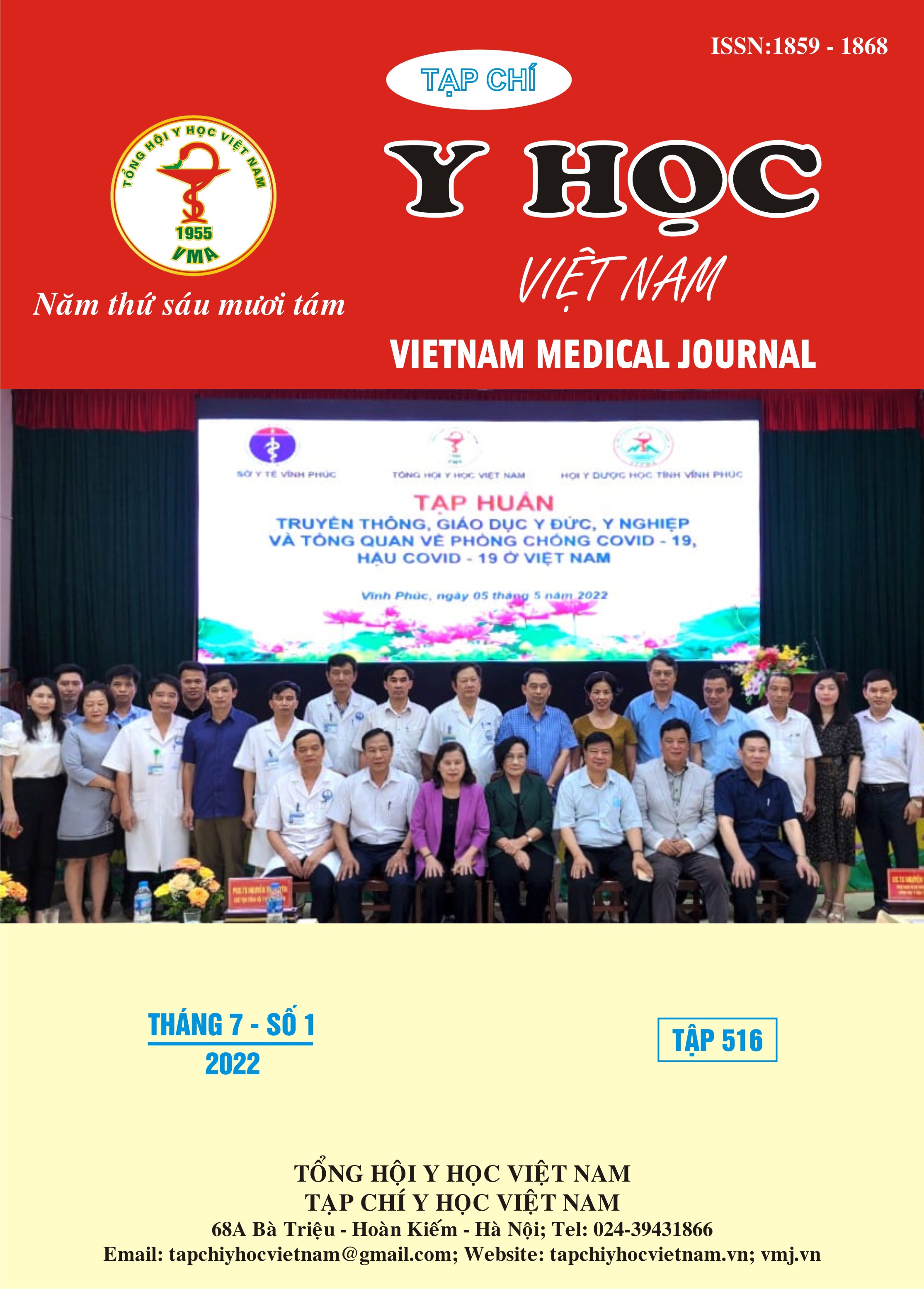THE STATUS OF CHILDREN'S HALF-BOARDING DIETARY INTAKE AT TWO PRESCHOOLS PHU LY AND HOP THANH, PHU LUONG DISTRICT, THAI NGUYEN PROVINCE IN 2021
Main Article Content
Abstract
Objective: To assess children's half-boarding dietary intake at two preschools Phu Ly and Hop Thanh, Phu Luong district, Thai Nguyen province in 2021. Subjects and research methods: The study was conducted on the half-boarding dietary intake of preschool children in Phu Luong district, Thai Nguyen province with the descriptive method of cross-sectional design. Use pre-designed survey questionnaires to collect demographic information. Use food weighting to gather information about food consumption. Research results: The rate of energy provided by P, L, G in the semi-boarding dietary intake enough compared to the recommended needs. However, the ratio of energy-producing substances in the semi-boarding diets at 2 preschools (12.8: 17.6: 69.6) had not met the recommended demand (12: 18: 70). The amount of vitamins B1, B2, B3/1000 kcal met much more than the recommended needs. Reasonable calcium/phosphorus ratio. The half-boarding dietary intake of children at the 2 schools met an excess of total energy (103.1%), protein (109.6%), lipids (101.0%), carbonhydrate (102.5%) and vitamin C (118.8%) were less than recommended. Amount of animal protein (169,4%), animal lipid (169.1%), vitamin B1 (131.0%), vitamin B2 (131.0%), vitamin B3 (156.7%), phosphorus (216.9) %), iron (151.6%), zinc (130.2%). reached 96.0%), vegetable protein (70.2%), vegetable lipid (only 59.7%), vitamin D (only 50.0%) and vitamin A responded to the most deficiency (only 24.8%). Conclusion: The dietary intake of children at two preschools in Phu Luong district, Thai Nguyen province was not balanced and reasonable.
Article Details
Keywords
Children, dietary intake, Phu Ly preschool, Hop Thanh preschool, Phu Luong district, Thai Nguyen province
References
2. Đỗ Ngọc Diệp và Nguyễn Trí Dũng (2011), "Thừa cân, béo phì và một số đặc điểm dịch tễ học ở học sinh tiểu học tại quận 10 TPHCM năm 2009-2010", Thời sự Y học số 67, tr. 3 - 6.
3. Trương Thị Thùy Dương, Trần Thị Huyền Trang (2020), Thực trạng khẩu phần bán trú của học sinh trường tiểu học Đội Cấn tại thành phố Thái Nguyên, Đề tài khoa học và công nghệ cấp trường, Trường Đại học Y Dược - Đại học Thái Nguyên.
4. Hồ Thu Mai, Phạm Văn Hoan, Nguyễn Hữu Bắc (2010), “Tình trạng dinh dưỡng, khẩu phần và một số yếu tố liên quan của học sinh 6 -14 tuổi tại huyện Sóc Sơn - Hà Nội”, Tạp chí Dinh dưỡng và thực phẩm, số 2, tr. 23 - 31.
5. Nguyễn Mạnh Tuấn (2013), Đánh giá khẩu phần bữa ăn bán trú và tình trạng dinh dưỡng của học sinh tiểu học tại thành phố Thái Nguyên, chuyên đề tốt nghiệp bác sĩ Y học dự phòng, Trường Đại học Y Dược - Đại học Thái Nguyên.
6. Viện Dinh dưỡng (2016), Nhu cầu dinh dưỡng khuyến nghị cho người Việt Nam, Nhà xuất Y học, Hà Nội.
7. Viện Dinh dưỡng (2021), Báo cáo đánh giá chiến lược dinh dưỡng quốc gia 2011-2020.
8. Viện Dinh dưỡng (2007), Bảng thành phần thực phẩm Việt Nam, Nhà xuất bản Y học, Hà Nội.
9. Analytix BI’s (2012), South Africa Country Report: Fast Food Consumers Trends 2007-2011.
10. Bornhors.C, Huybrechts. I and associates (2012), “Diet-obesity associations inchildren: approaches to counteract attennuation caused by misreporting”, Public Health Nutr, vol.15, no.3.


